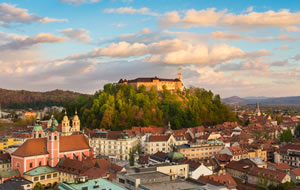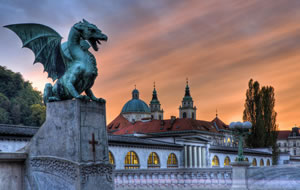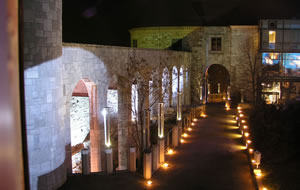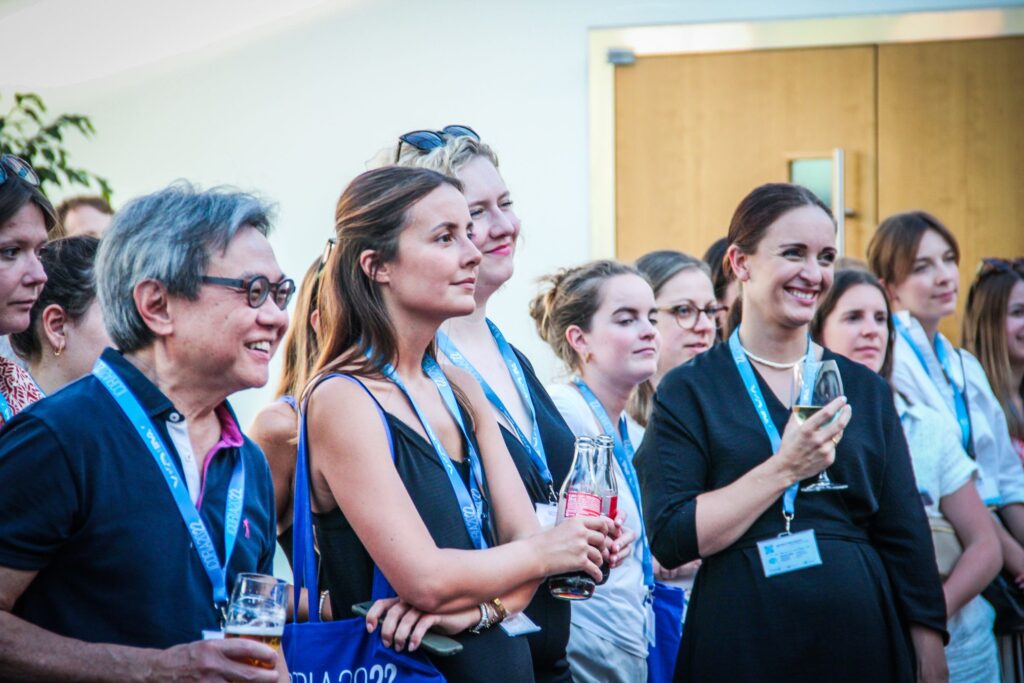Ljubljana
The visitor’s first impression of Ljubljana, Slovenia is that it is an exceptionally young city because its more than 50,000 students lend it a special youthful feeling. Many scientists come to Ljubljana because of its university and institutes with solid international reputations.

Ljubljana has some 276,000 inhabitants and is considered a city that suits both its residents and many visitors. Even though it is a middle-sized European city, it maintains the friendliness of a small town and simultaneously possesses the characteristics of a metropolis. Here, at the meeting point of the cultures of east and west the old comes together in harmony with the new. In Ljubljana, remainders of all five millenniums of its history are preserved, including the legacy of the Roman town of Emona and the Old Town with its medieval castle, and Renaissance and Baroque facades with ornamental portals and uneven roofs. The mosaic is complemented with the bridges over the Ljubljanica River and the vast Tivoli Park which extends into the very centre of the city.

Ljubljana’s present image mainly generated by the Italian Baroque and partly by the Secession period of 200 years ago is reflected in the style of the many buildings erected immediately after the earthquake of 1895. In the first half of the 20th century, the world famous architect Jože Plečnik left his distinctive personal stamp on his native city while also taking European standards into consideration. The city’s image was later shaped by his more liberal disciples and the Art Nouveau creations of other renowned young Slovenian architects.

Ljubljana is a city of culture. It is home to numerous theatres, museums and galleries and boasts one of the oldest philharmonic orchestras in the world. For the people of Ljubljana, culture is a way of living and thinking and is very much part of their everyday life. The first music society in Slovenia, the Academia philharmonicorum labacensis, was founded in 1701. Its honorary members have included renowned composers such as Joseph Haydn, Ludwig van Beethoven and Johannes Brahms, and distinguished musicians like the violinist Paganini. Between 1881 and 1882, at the very start of his career, Gustav Mahler was the resident conductor. Over 10,000 cultural events take place in the city every year, including 10 international festivals. These events allow both the inhabitants of Ljubljana and visitors to enjoy artists from different fields of music, theatre and fine arts through to the alternative and avant-garde.
Read more about Ljubljana here and there.
Images courtesy of:
Photo: Matej Kastelic (Ljubljana Tourism Archives) / Aleš Frelih (Ljubljana Tourism Archives) / Kerin (Ljubljana Tourism Archives)

